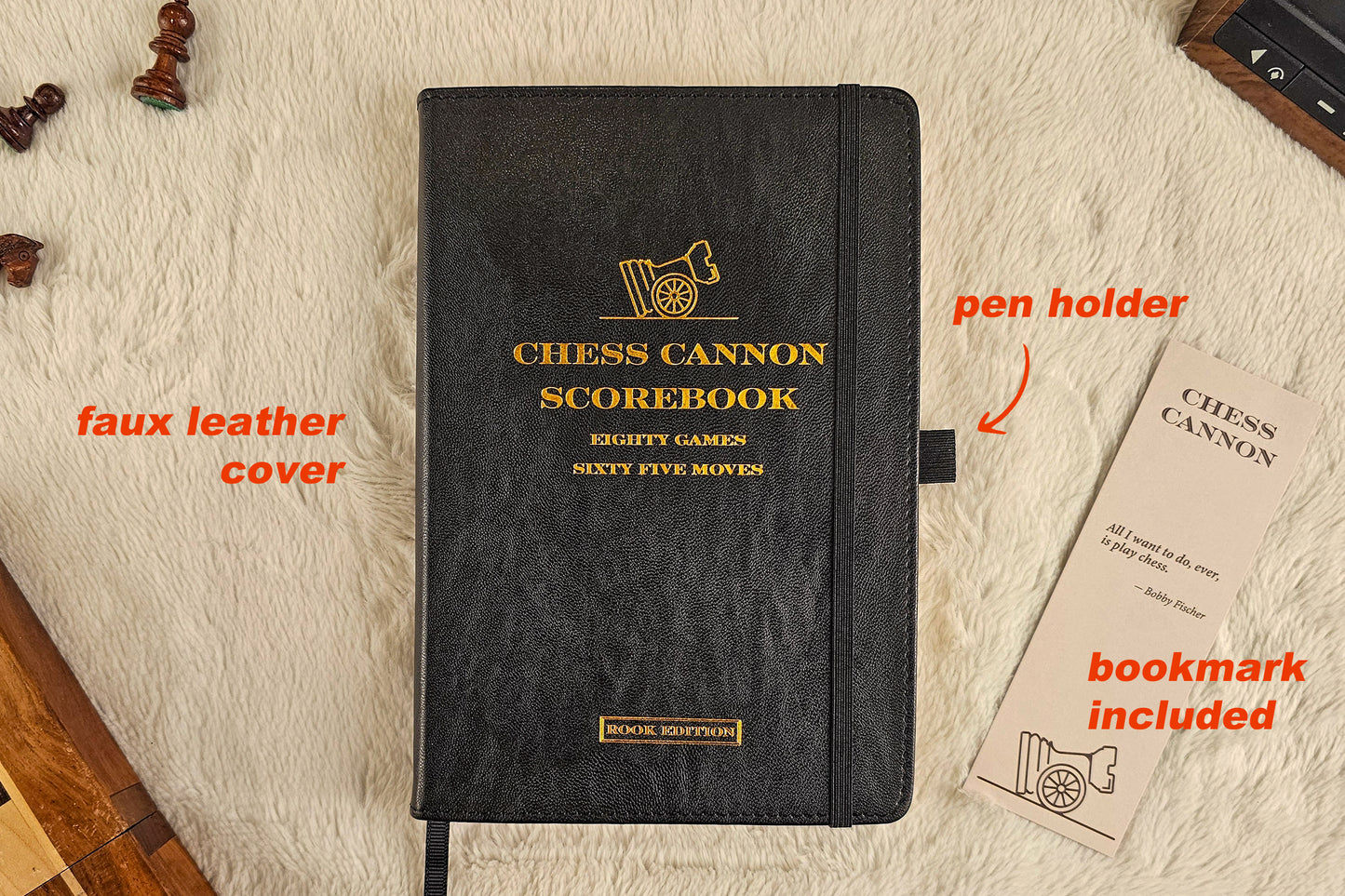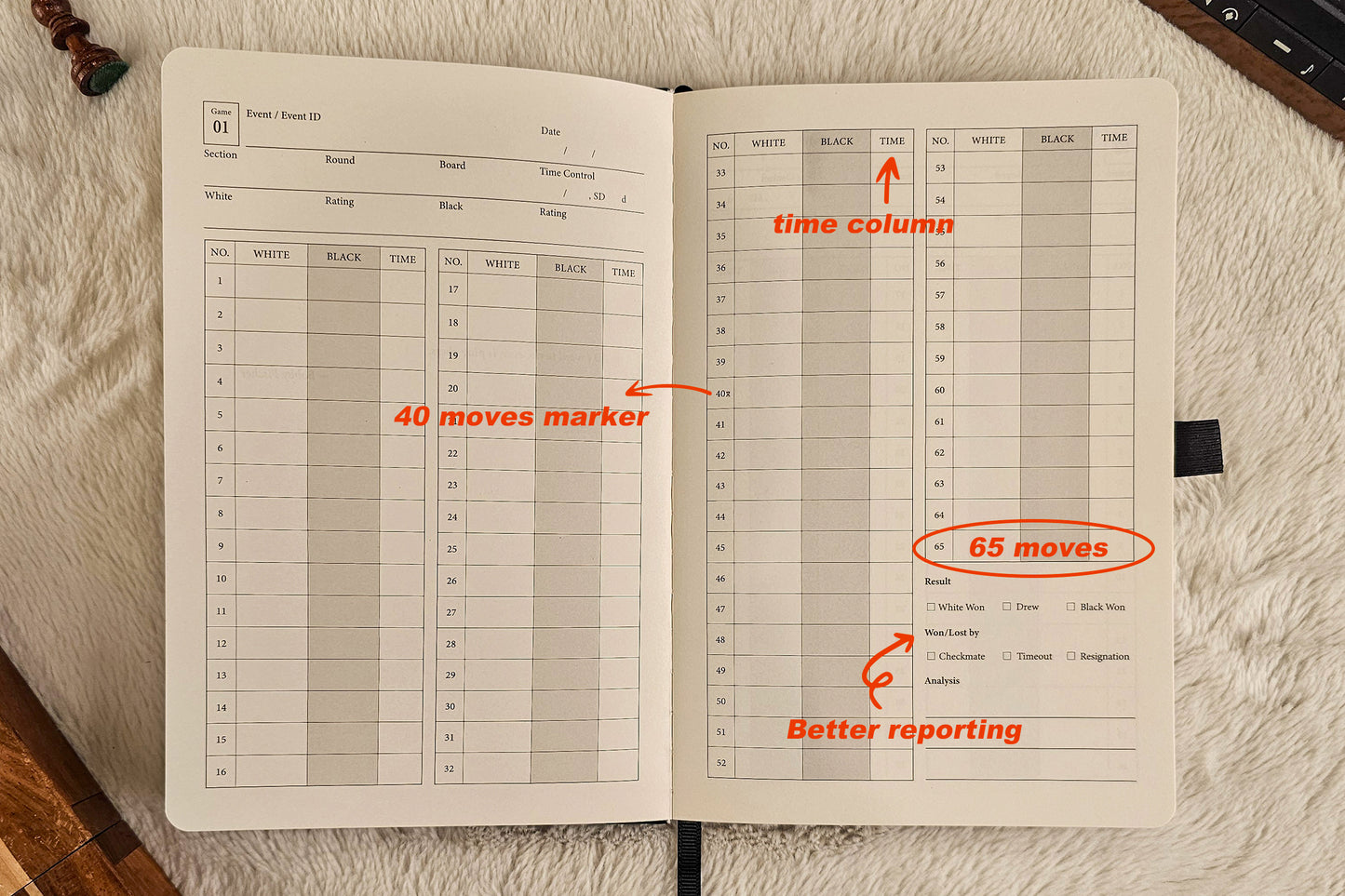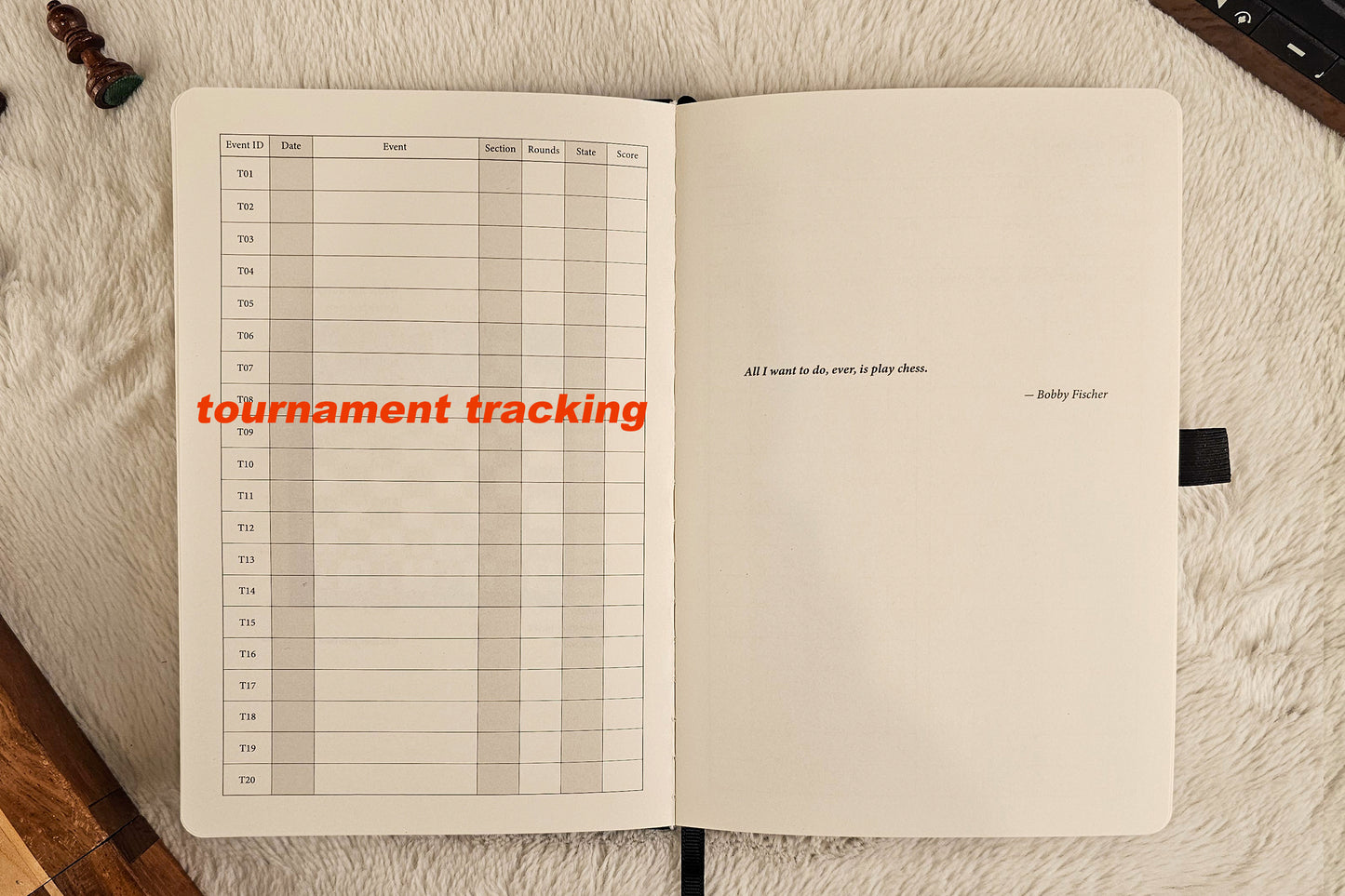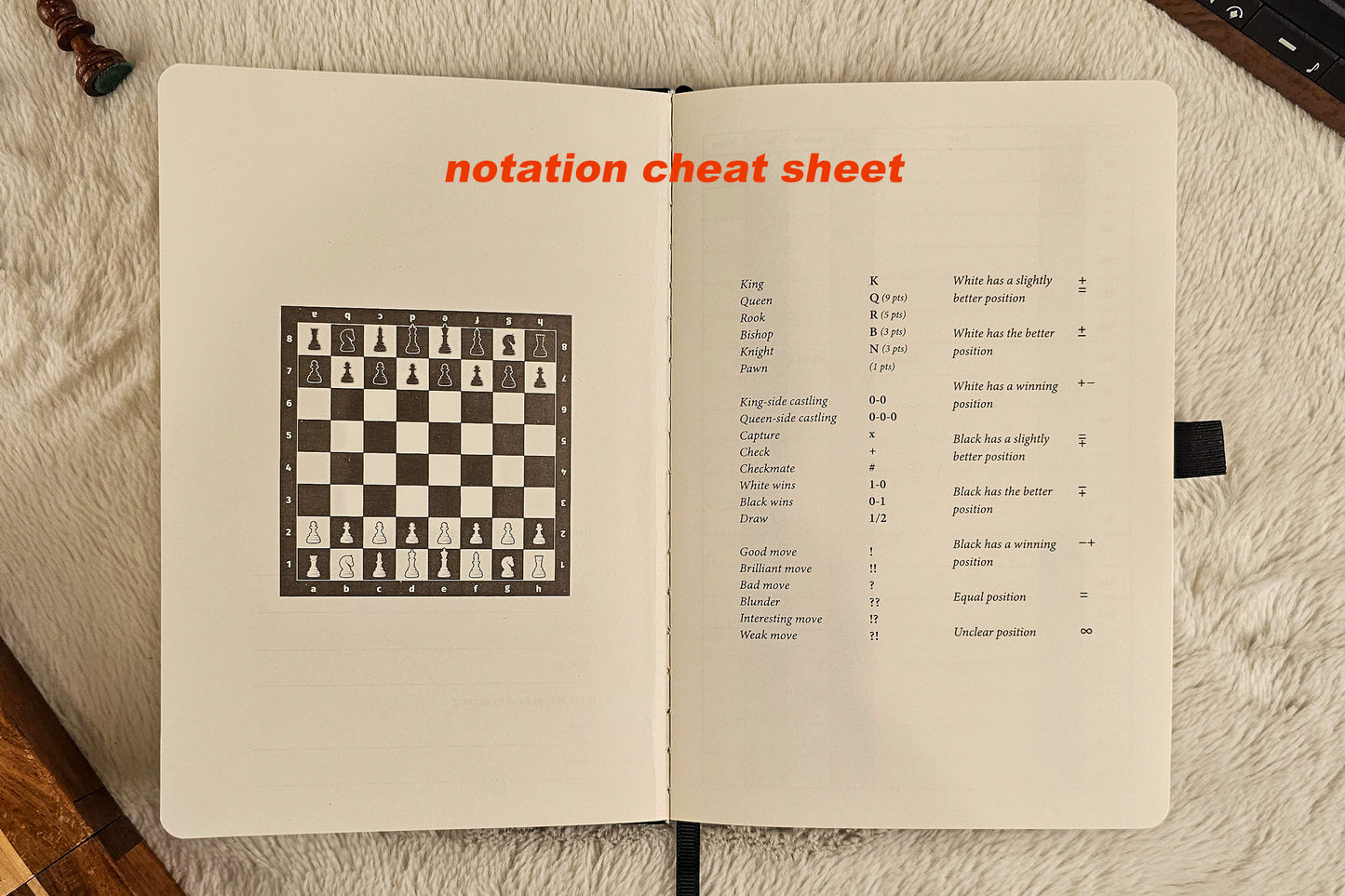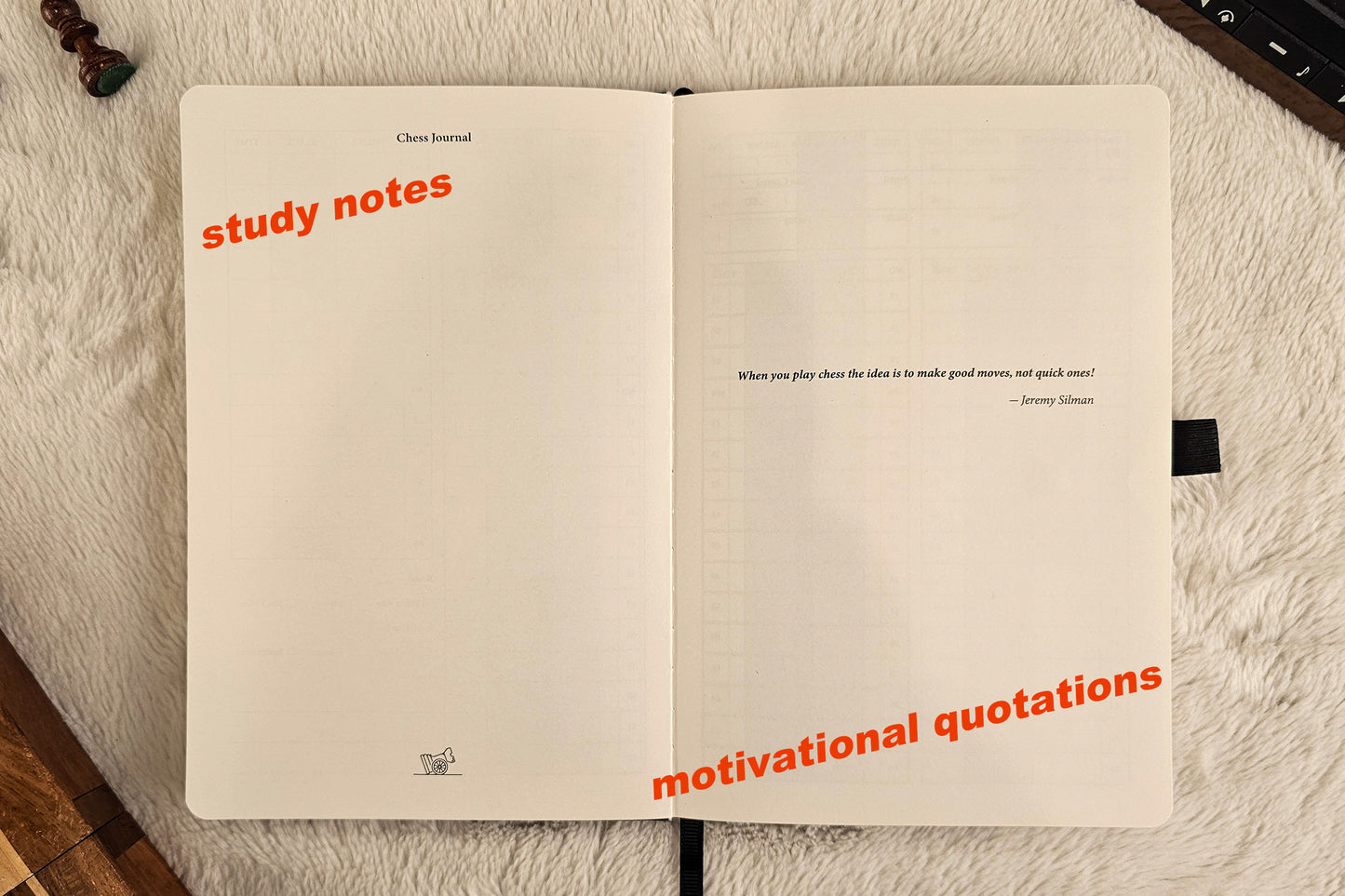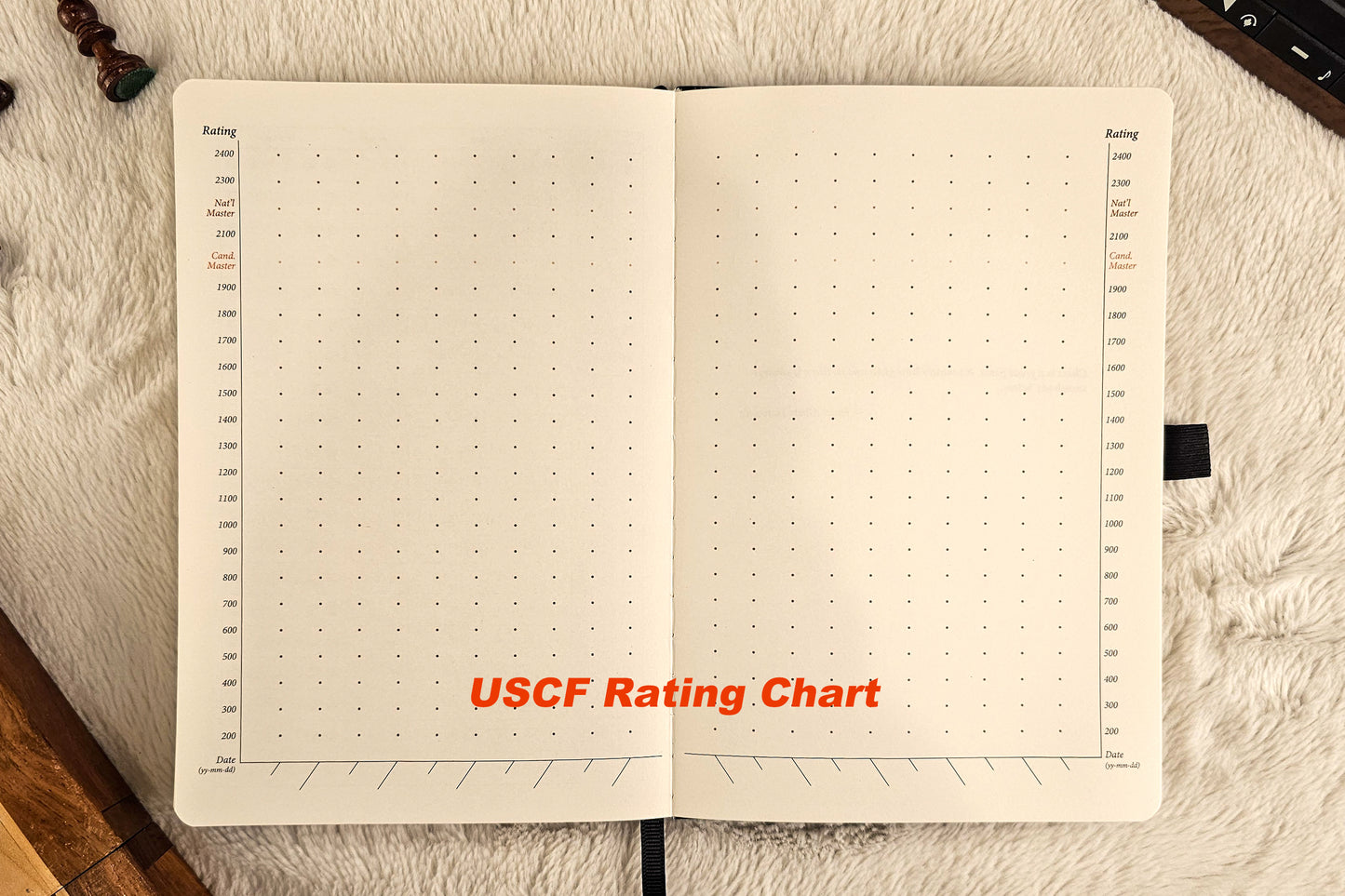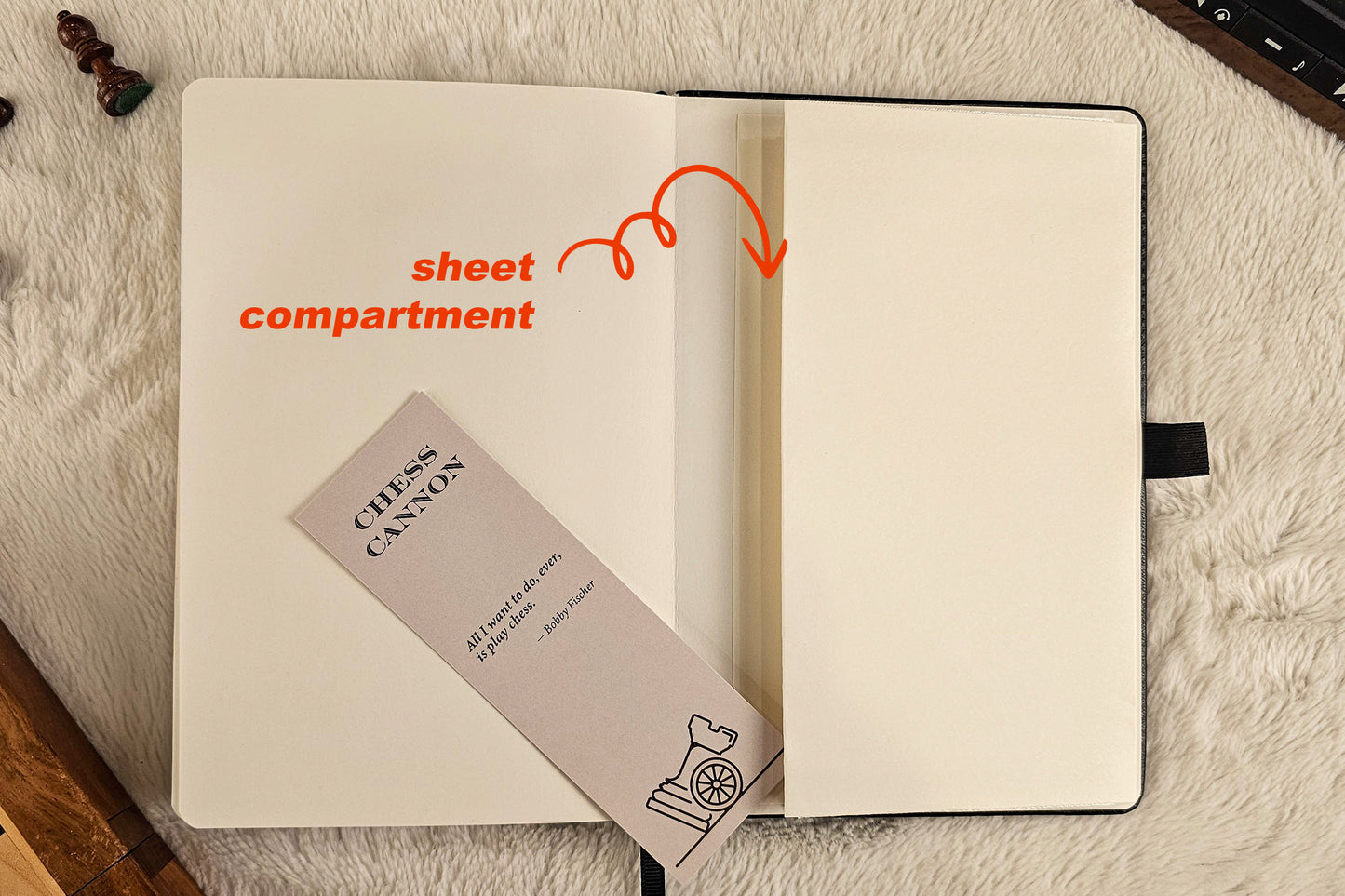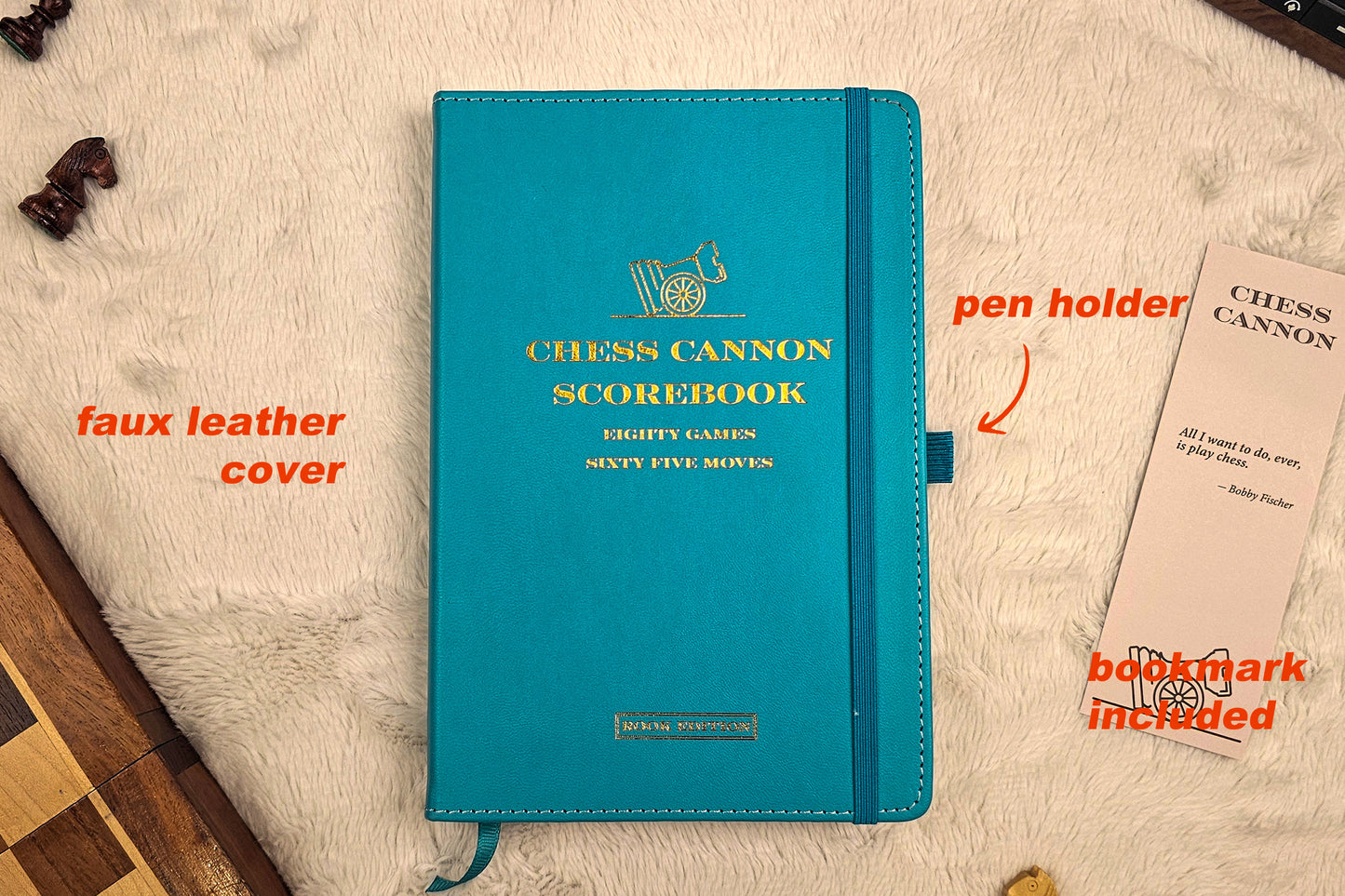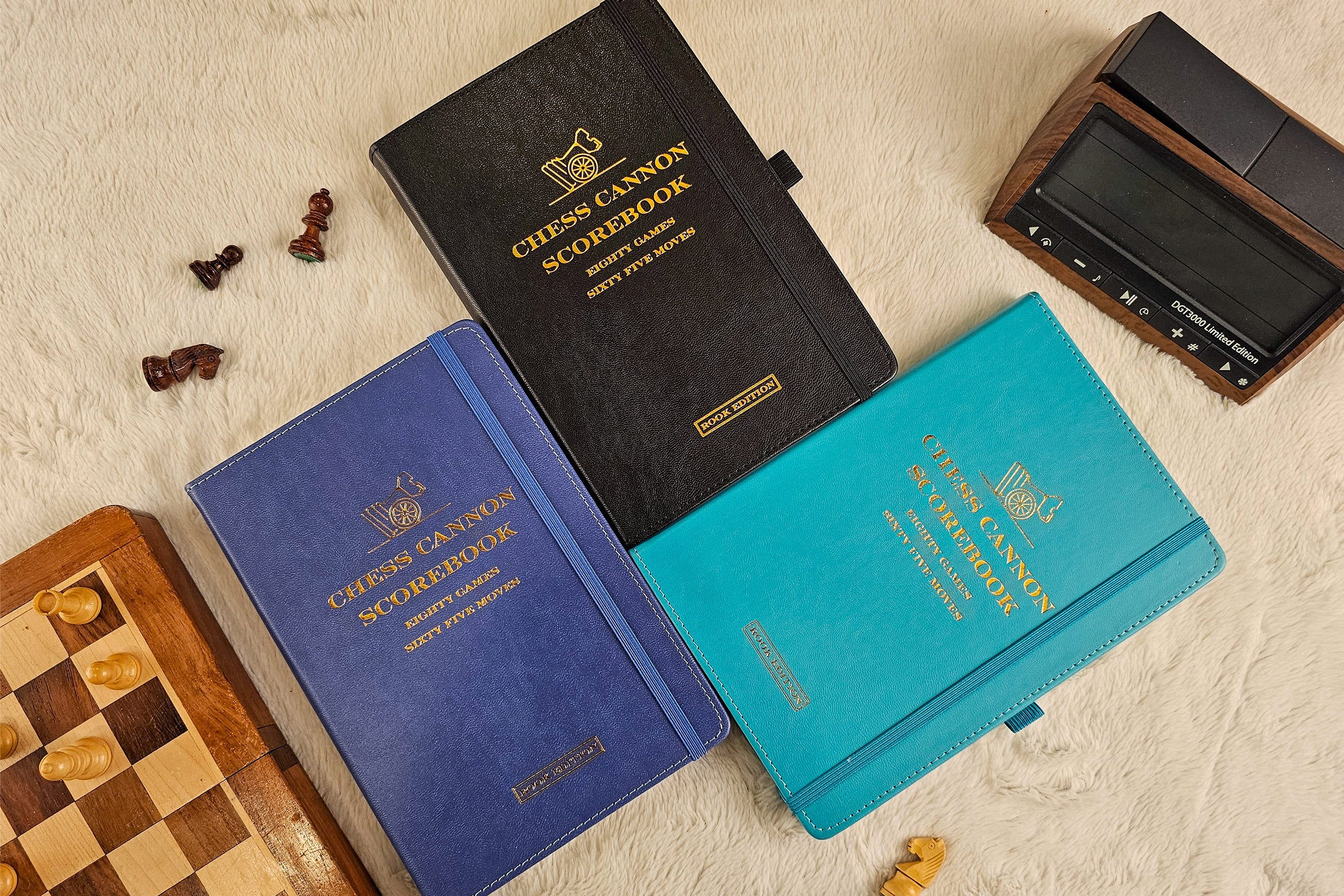
A Superior Chess Scorebook Designed by A Chess Dad
As a novice chess player and dedicated chess dad, I originally learned chess just to teach my son the basics. My elder son, Leon, started playing in tournaments about three years ago and has been playing at The Marshall Chess Club for a year and a half. My younger daughter, Caroline, has been playing chess for less than a year and is also a member at The Marshall Chess Club.
Developing good notation habits and conducting post-game reviews are essential for any serious chess player. I previously bought hardcover notation books for my children, but found the options limited, the designs monotonous, the quality average, and the prices high. Therefore, I decided to design a better notation book. A superior notation book can encourage players to take the game more seriously, as has been the case for my children.
The Chess Cannon notation book stands out from other products on the market in several ways:
Inspiration: Every eight games, the book features an inspiring chess quote to motivate players. The first quote is "All I want to do, ever, is play chess" by Bobby Fischer. I've carefully selected quotes that resonate with young players and reflect the right approach to the game. For example, to discourage rash gameplay, one quote reads "When you play chess, the idea is to make good moves, not quick ones!" As players improve, they find quotes like "Good positions don't win games, good moves do." Some quotes are also meant to connect with chess parents, like myself. The last quote, "Chess is a great game. No matter how good one is, there is always somebody better," reminds us that it’s normal for our children to lose to lower-rated players as they also need to challenge higher-rated players to grow.
Thoughtfulness: The book includes a clear board chart with notation explanations at the beginning, a dedicated time column for new players to track their pace, an hourglass icon next to move 40 as many tournaments use the 40/80 time control, 65 instead of 60 moves per game for longer games, and a journal page every eight games for recording chess thoughts.
Fun and Engagement: Players can express their feelings by circling out different face emojis about each game in a stats table and track their USCF rating progress in a chart at the end of the book.
Quality: The cover is made of synthetic leather and the inner pages uses 120gsm high quality paper. It features a pen holder, a concealed sheet compartment on the back cover, a ribbon bookmark, and a book band.
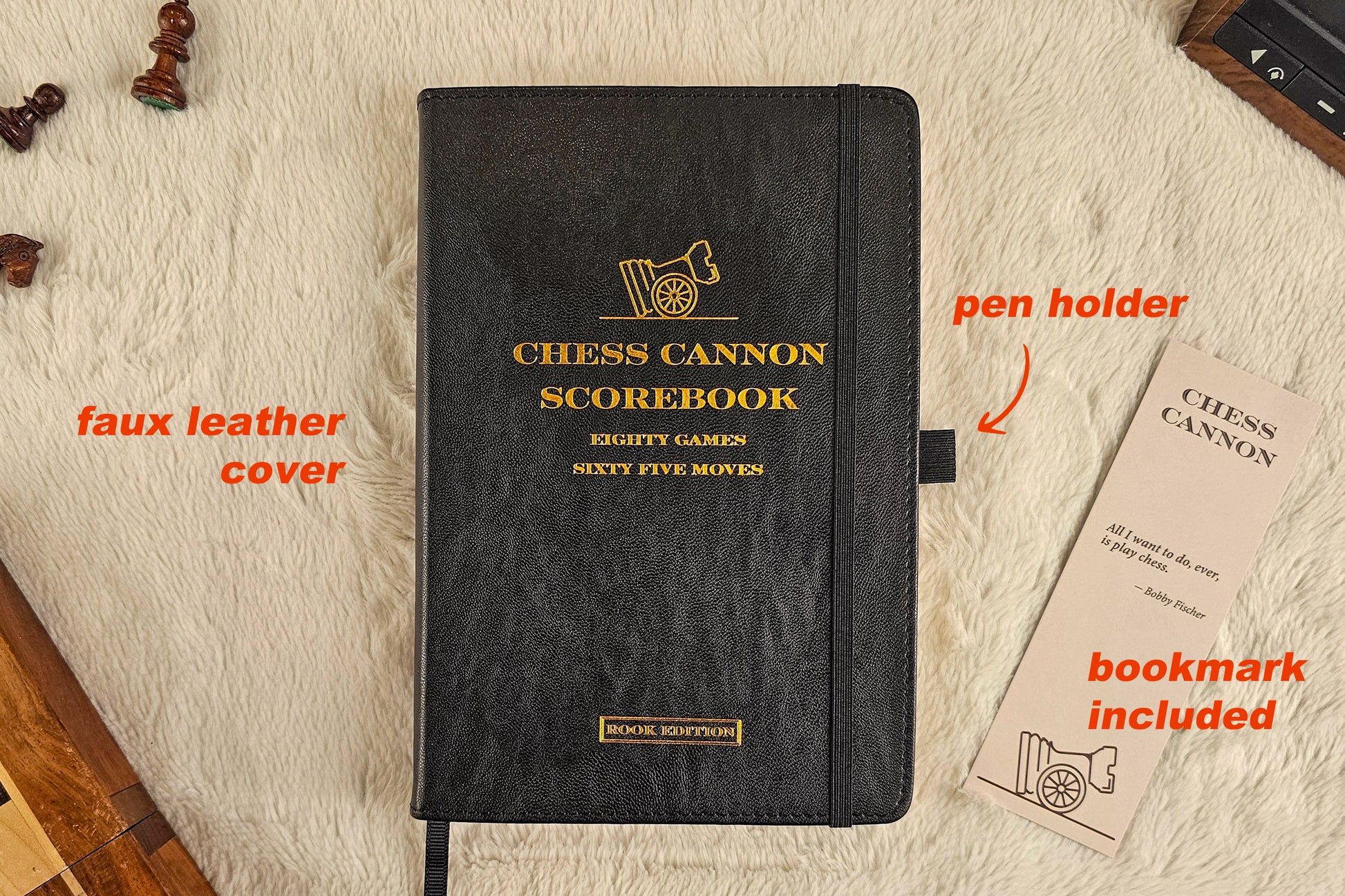
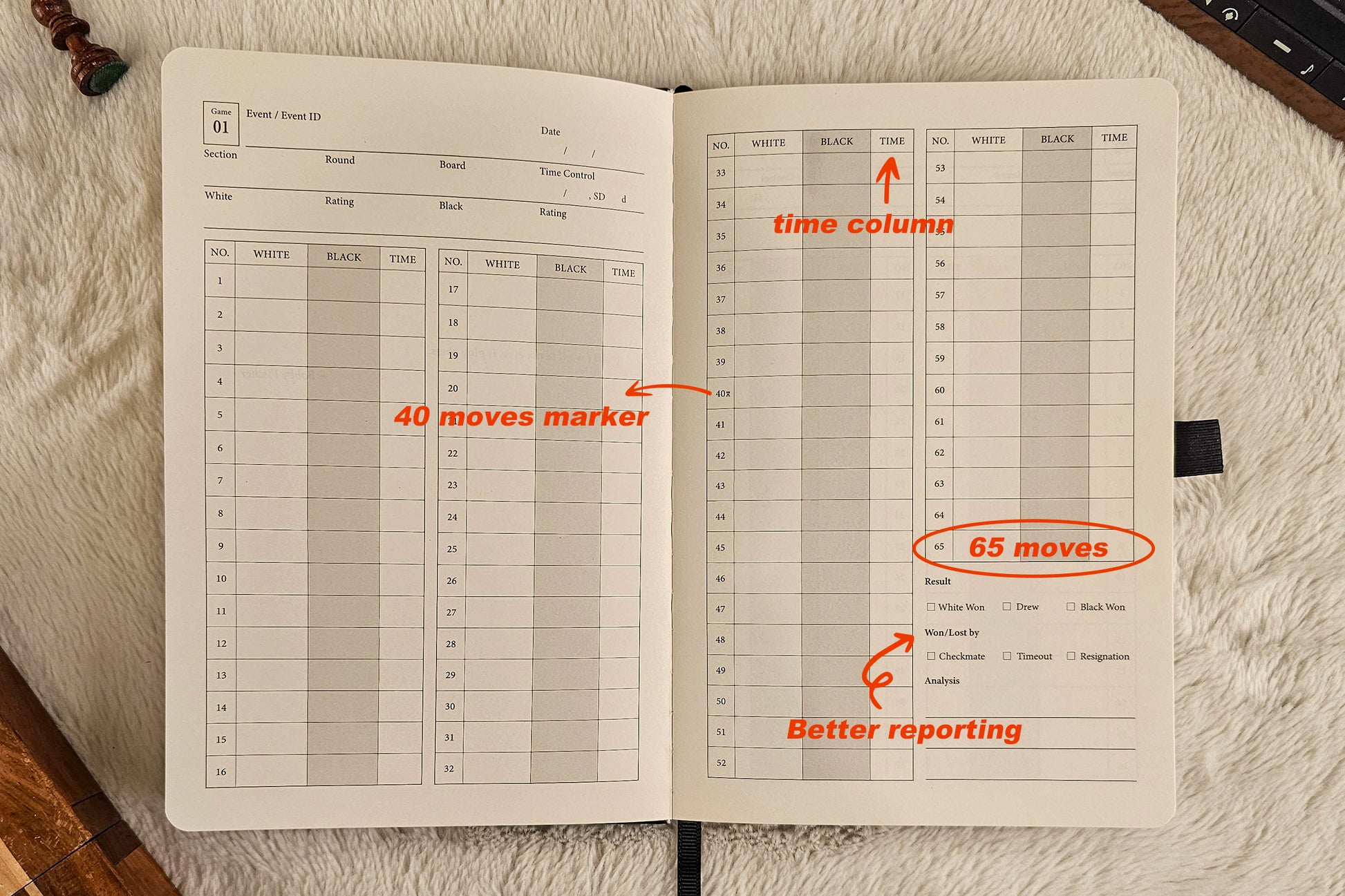
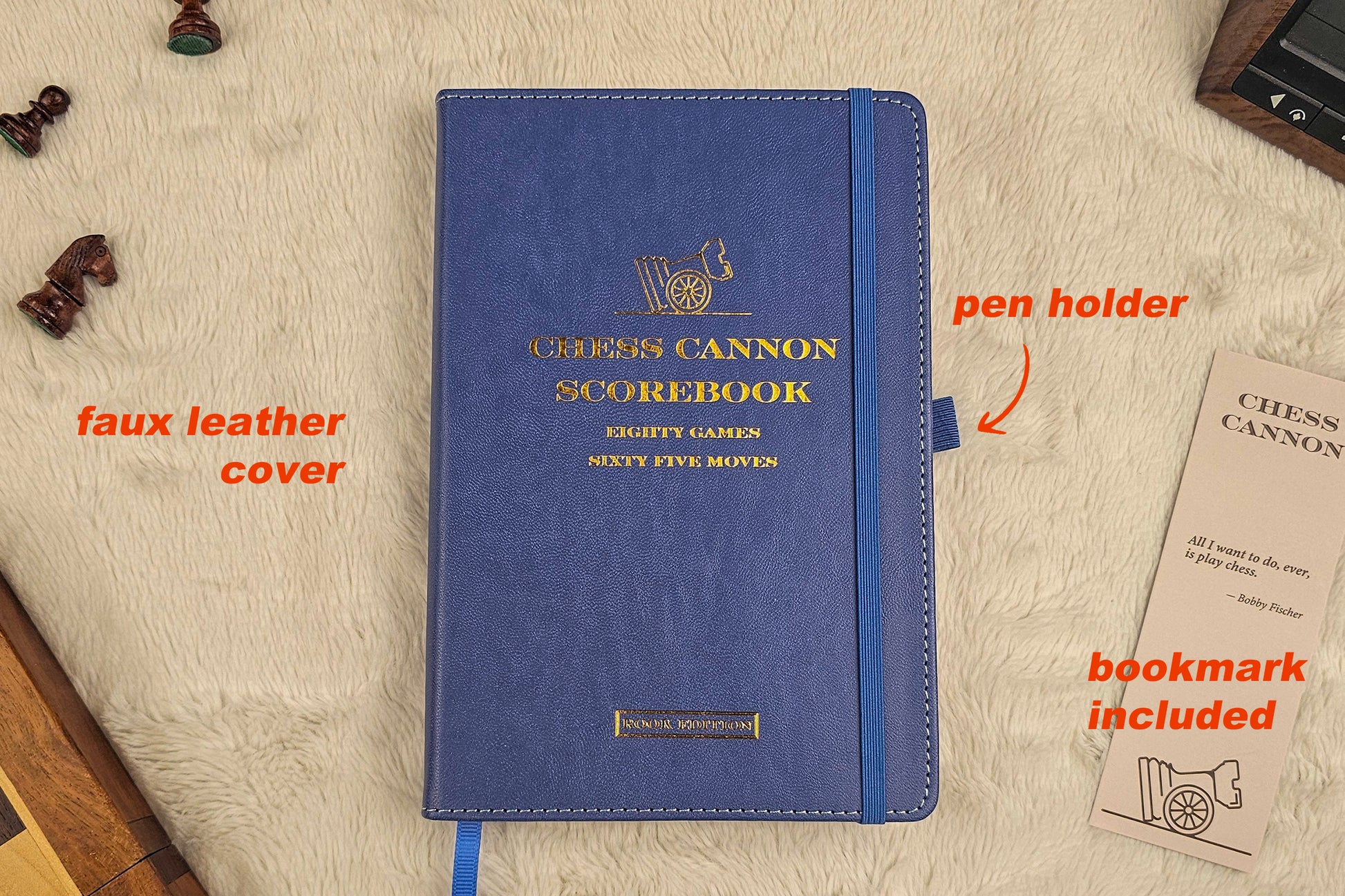
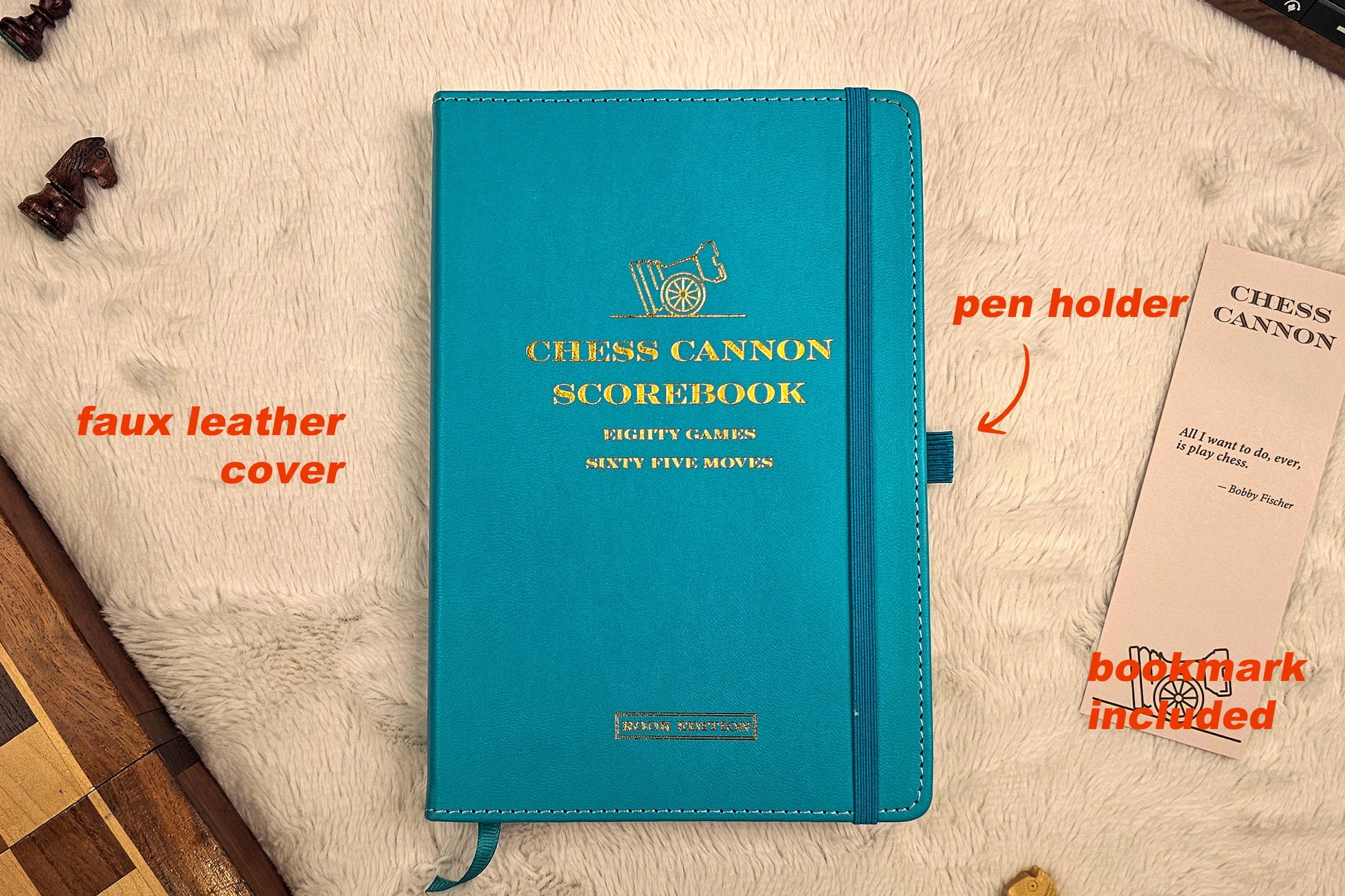
Chess Notation Scorebook - Rook Edition
Share
